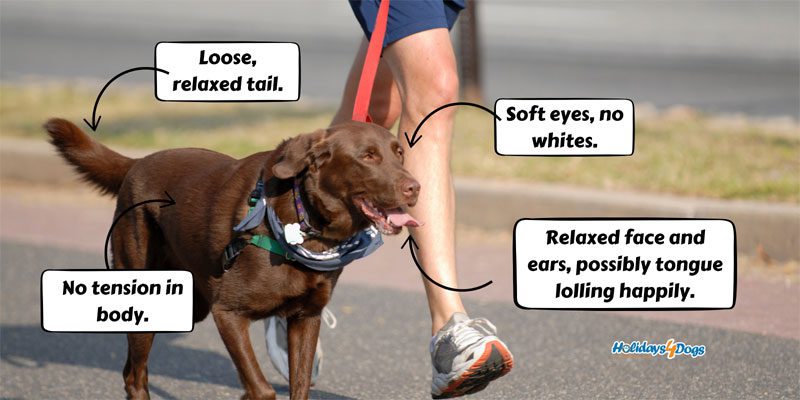Understanding Canine Body Language.
Dogs use very different signals to indicate to other dogs – and to us – what their intentions are, or how they are feeling. And, of course, dogs can’t talk so they communicate in their own way. For dog owners and non-dog owners alike, it’s important to lean what these signs might mean. To learn more about understanding canine body language, read our Holidays4Dogs article.
Recognising when dogs are confident and relaxed, or worried and scared is really important. However, it’s amazing how many people misinterpret some of these signs and sadly, it’s why people end up getting bitten. Understanding how a dog might be showing signs of being uncomfortable, means it’s easier to avoid potential challenges, or conflict. This is particularly important where children are living in a households with dogs.
Canine body language and breed differences.
Sometimes, canine body language is subtle. In addition, different breeds have different body features, which might make their body language appear slightly different.
For example, dogs with floppy ears may make less obvious signals than dogs with pricked ears. Dogs have different tail structures – dogs with tight, curly tails are less able to signal their feelings. Dogs with long fur and dark coloured dogs makes it much harder to spot facial expressions.
Context and perspective.
Considering the context and environment can provide dog owners with more clues as to how the dog might be feeling. For example, if a dog licks their lips just before dinner is served, this is a perfectly normal bodily response to the presence of food.
Do you think this dog looks comfortable?
Note the dog is leaning away and looking away from the child. Lips are tightly closed. The dog may also lick their lips in this situation.
These are subtle warning signs a dog may display, as a precursor to growling, or biting.
It is important to be aware of these signals which potentially indicate the dog is feeling uncomfortable, anxious, or scared.
However, if the dog displays lip licking behaviour while being petted by someone unfamiliar, being hugged too tightly, or while visiting the vet – this may well indicate the dog is feeling worried, or scared.
Signs a dog may be scared, anxious, or stressed.
Signs of anxiety, or stress can be subtle and can also happen suddenly. Consider what is happening at the time, the environment you are in (loud, busy areas?, boisterous dogs? noisy children?) and remove your dog from the situation, move away from the dog, or stop the activity that is happening.
There are other signs to look out for too;-
*Trembling. Shaking ( as if they would when wet).
*Panting. Pawing, or mouthing.
*Refusing to take treats, when normally they would.
*Lunging/spinning on the lead/trying to get away.
*Crouching/lying flat. Lying down showing their bellies. Tail tucked under.
*Low stiff tail wagging – this is a sign most often missed. Tail wagging does not always indicate the dog is happy and relaxed.
Signs a dog is happy and relaxed.
Below is a picture of a calm, confident dog. The dog is relaxed, responsive to their owner and calm in their surroundings. However, do remember things can change and dogs behave differently in different situations.
Final thoughts.
Recognising the, sometimes subtle body language in dogs, is really important as this can prevent situations getting worse. If you are able to respond to the more subtle signs, it means the dog does not have to resort to growling, or worse, biting.
By responding to these signals early, dogs learn they are safe around humans and are much less likely to snap, or bite. If these signs are ignored, dogs may learn not to bother giving these warnings and go straight to snapping instead.
Dogs naturally prefer to avoid conflict. They indicate this desire to stay out of trouble with their own unique body language. It’s up to us to learn this language.
If you are at all worried about your dog’s behaviour, especially aggressive behaviour, it is crucial to seek help from your vet. Certain dog behaviours like anxiety, nervousness, or aggression, might be related to health issues i.e. the dog may be in pain. Therefore, it is important to rule health conditions out. If the dog is healthy, you may need to find a behaviourist, or trainer, to help you learn about dog body language and address any behaviour challenges you might be facing.






